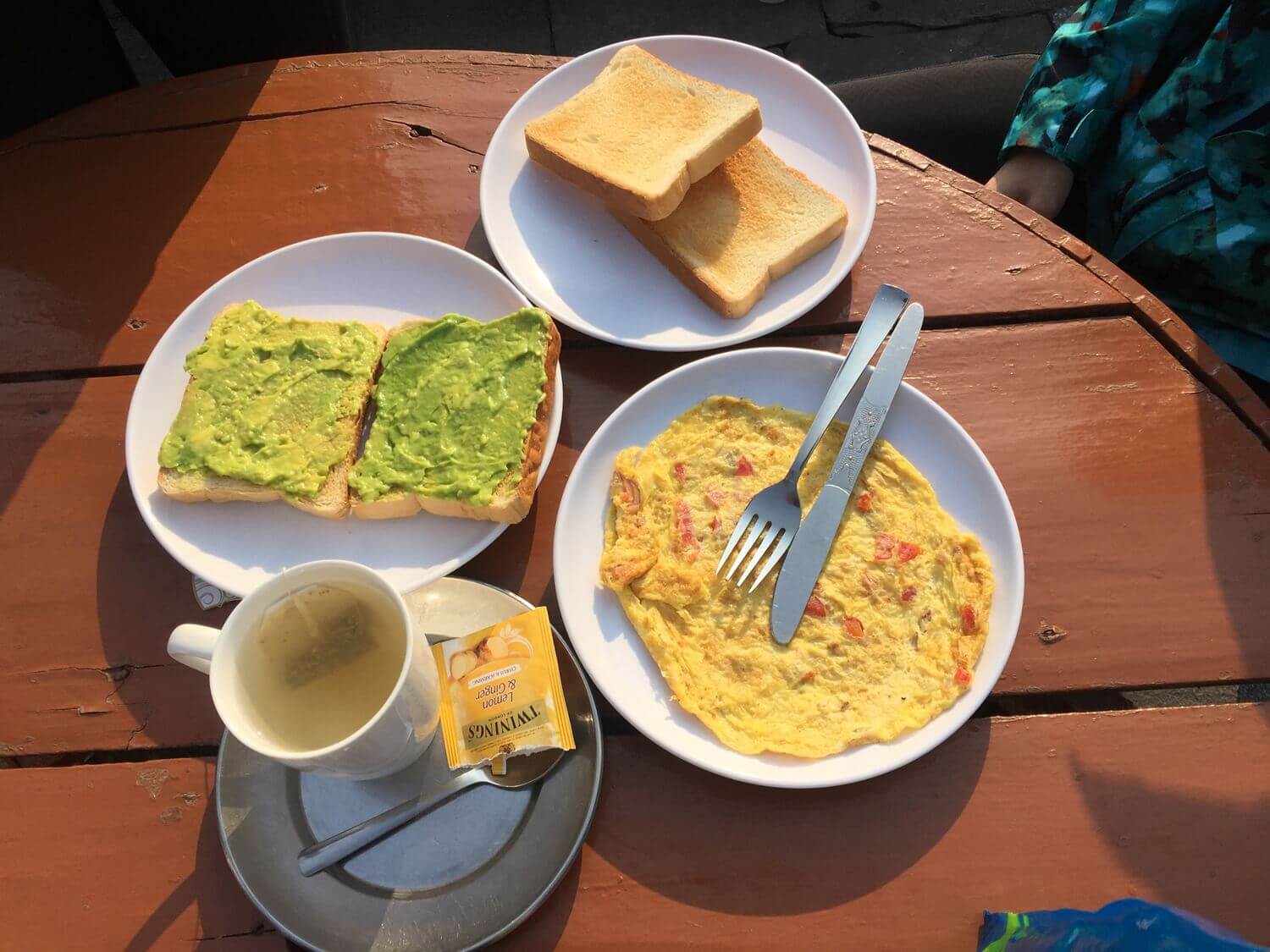Satisfying trekker appetite for adventure
An assortment of French cheeses, appetisers and wine sit atop a stately table adorned with a purple tablecloth against the backdrop of snow-capped Himalaya and clear blue skies.
For the locals and travellers nearby more used to the dal bhat trek staple, this is a sight to behold. Tibetan bread and simple dishes dominate meals above 3,500m, but for an increasing number of trekkers, eating well goes with walking well.
One of the agencies is Responsible Adventures which has since 2007 been a pioneer of ‘gourmet trekking’, elevating hiking cuisine from modest meals to epicurean delicacies.
Owner and certified foodie Raj Tamang wanted to give a new dimension to his boutique treks when he moved to Nepal from Singapore in 1988. He had a vision for trekking that involved delicious and nutritious food.
Read also:
The superfoods of the Andes and the Himalaya, Sonia Awale
Much more than dal bhat, Anil Chitrakar
Despite having no professional culinary education, he learned from people he met from around the world, experimented with continental flavours, improvising with ingredients and creating palatable dishes with local foods.




All the trekking chefs at Responsible Adventures are trained by Tamang himself, and they have learned to make Thai red curry with local ingredients, hummus with whatever is available, and rough and tumble cakes on the go.
Trekkers have learnt to always expect the unexpected in Nepal, but one aspect of the experience that remains constant is the piping hot ayurvedic drink that is given to trekkers every morning. According to Tamang, this elixir of water, turmeric, honey, apple cider vinegar and lemon has anti-inflammatory and energising properties that powered trekkers throughout the day.
Besides this magic concoction, every meal is a surprise and trekkers only know what they will be eating when it is served. Breakfast might be cereal and porridge sprinkled with chia or flax seeds, nuts and honey, and roti or chapati with organic peanut butter. And while other trekkers have the option of mostly hard-boiled eggs and a cup of watered down tea, clients of Responsible Adventures get eggs to order and hot cups of freshly brewed coffee.

The smell of ground coffee beans at the break of dawn on the banks of Phoksundo Lake (pictured above) beckons even the heaviest of sleepers towards the French press. Then come waffles with goji berries at 4,000m, which is probably a world altitude record.
For lunch and dinner, clients may get maki sushi with avocado and topped with sweet potato, which could easily be mistaken for salmon. Other menu items include mac n’cheese, pasta, pizza, Thai curry, falafel, soup and even desserts like apple pie or cake.
A cheese platter featuring Danish blue, camembert and brie, and cold meats, olives, local proteins dressed with cream and mustard sauce, and salads packed with super foods are also served.


“We work hard to provide our clients with a Rolls-Royce experience at the price of a Toyota Corolla,” says Tamang.
Responsible Adventures’ boutique treks are customised according to the trekkers’ fitness levels and preference, but each one, despite having the same route, offers a completely different experience.
Tamang also takes hikers to a hidden gem in eastern Nepal that is off the beaten trek. Although he wished to keep the location a secret, fearing the arrival of hordes of tourists, he reveals, “That place is real Nepal, a Nepal that existed before trekking.”
Tamang calls his treks glamping (glamorous camping) which means that even in remote areas, there are showers, toilet tents, kitchen and sleeping tents. Other memorable treks include paragliding from Mardi Himal to Pokhara, jamming with Polish trekkers in Upper Dolpo, and arranging traditional Gurung dresses for a group of Singaporean girls.

Such luxuries do not come without challenges. Responsible Adventures faced an egg mishap when a mule carrying a trip’s load of eggs fell into the Bheri River. A client’s unexpected allergy was thankfully discovered on time.
Each trek is a discovery, and although there is no gain without pain, Tamang tries to make it as memorable as possible: “All the trekkers have to do is walk and enjoy the scenery, observe and absorb the beautiful environment around them.”




